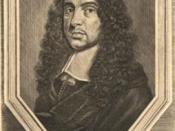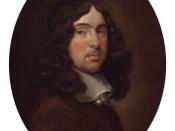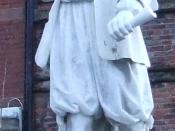Subject----- what is the philosophy that is upheld in Andrew Marvell to his coy mistress and how it is relevant to the thematic development discuss and make comments.
"To His Coy Mistress" is a lyric poem. "To His Coy Mistress" teaches much about the elements of argumentation, figures of speech, human love, time, death, and immortality. We find a set of images, metaphors, conceits, symbols, and patterns in the poem, which contribute to the overall form of the work. The particular statement of this poem is love. Emphasize- --time and youth. Youth become ugly because of time is moving.
. The poem presents three different kinds of time. In the first stanza, the speaker attempts to "escape from time" where the shy mistress and he may play tenderly forever; the use of the subjunctive mood ("Had we but world enough, and time"), however, indicates that such an idyllic state is non-existent.
The second stanza employs the image of the desert. Here the laws of nature, the laws of mortality, decay, and physical annihilation control time.
In the final stanza, the speaker escapes into cyclical time hoping to gain eternity through passionate love. The sun--of "soul" and "instant fires"--is a universal symbol of life and creative energy, which merges the circle/sphere ("Let us roll all our strength and all / Our sweetness up into one ball").
Here the speaker develops this poem by two ideas.
1-Carpe diem theory.
2-Philosophical idea.
3-Aesthetic sense.
A motif that offers insights into "To His Coy Mistress" is that of space and time ("Had we but world enough, and time"); it shows that the poem is "a philosophical consideration of time, of eternity, of man's pleasure (hedonism) and of salvation in an afterlife (traditional Christianity)."
Other thematically important motifs are carpe diem means...



To His Coy Mistress
You've written a good poetry analysis but I suggest you change the title to "The Philosophy and Theme of Andrew Marvell's poem 'To His Coy Mistress.'" In that way, users looking for this topic will be better helped in doing so.
5 out of 5 people found this comment useful.